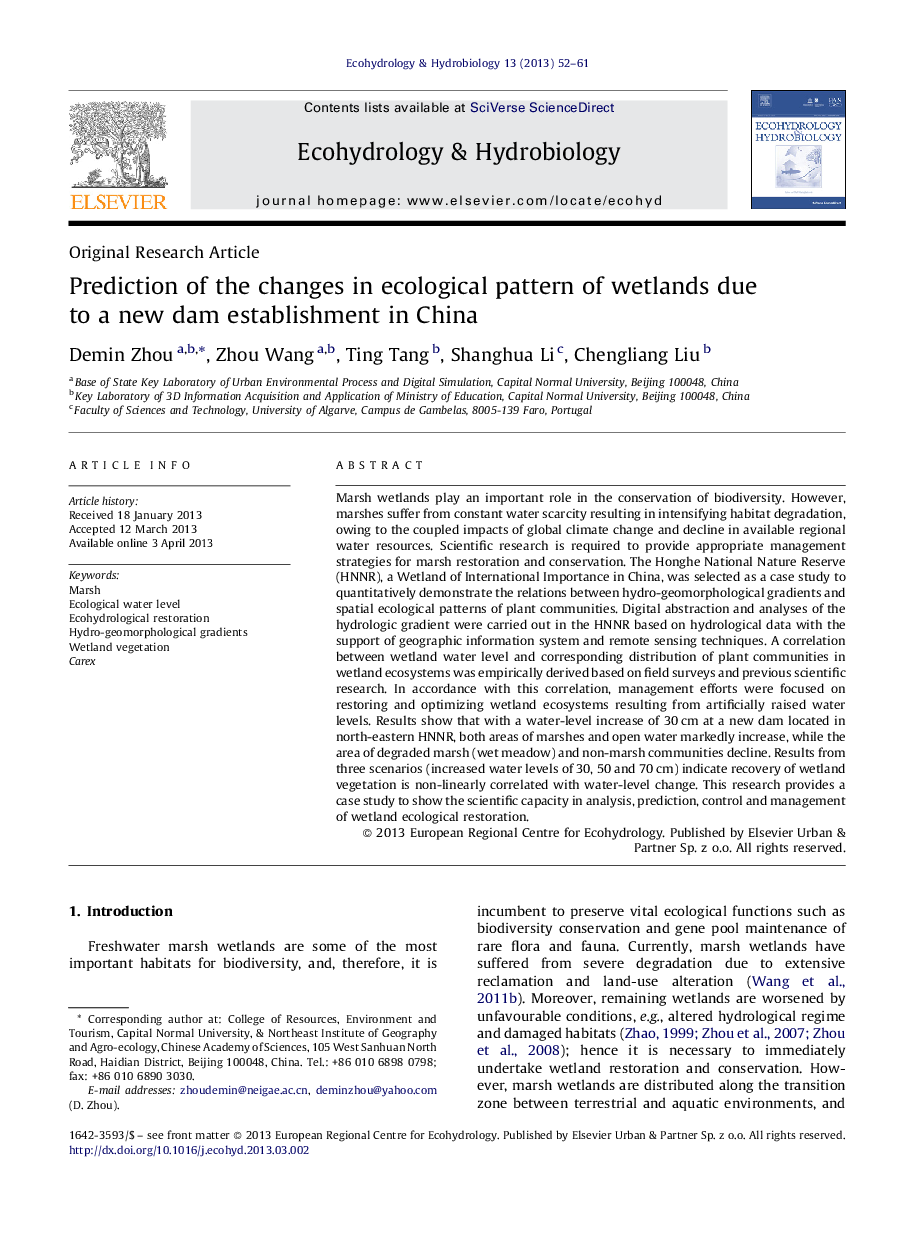| Article ID | Journal | Published Year | Pages | File Type |
|---|---|---|---|---|
| 4388030 | Ecohydrology & Hydrobiology | 2013 | 10 Pages |
Marsh wetlands play an important role in the conservation of biodiversity. However, marshes suffer from constant water scarcity resulting in intensifying habitat degradation, owing to the coupled impacts of global climate change and decline in available regional water resources. Scientific research is required to provide appropriate management strategies for marsh restoration and conservation. The Honghe National Nature Reserve (HNNR), a Wetland of International Importance in China, was selected as a case study to quantitatively demonstrate the relations between hydro-geomorphological gradients and spatial ecological patterns of plant communities. Digital abstraction and analyses of the hydrologic gradient were carried out in the HNNR based on hydrological data with the support of geographic information system and remote sensing techniques. A correlation between wetland water level and corresponding distribution of plant communities in wetland ecosystems was empirically derived based on field surveys and previous scientific research. In accordance with this correlation, management efforts were focused on restoring and optimizing wetland ecosystems resulting from artificially raised water levels. Results show that with a water-level increase of 30 cm at a new dam located in north-eastern HNNR, both areas of marshes and open water markedly increase, while the area of degraded marsh (wet meadow) and non-marsh communities decline. Results from three scenarios (increased water levels of 30, 50 and 70 cm) indicate recovery of wetland vegetation is non-linearly correlated with water-level change. This research provides a case study to show the scientific capacity in analysis, prediction, control and management of wetland ecological restoration.
